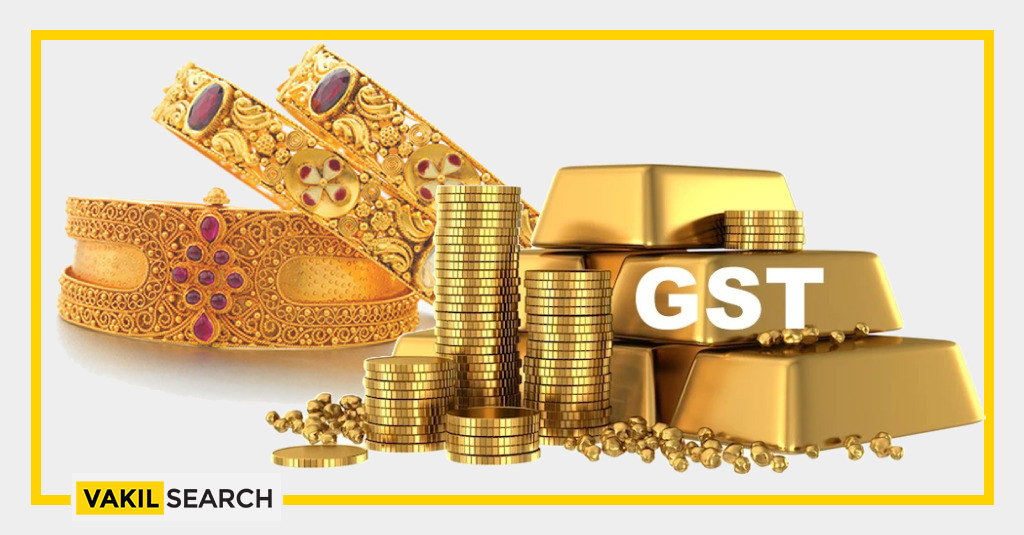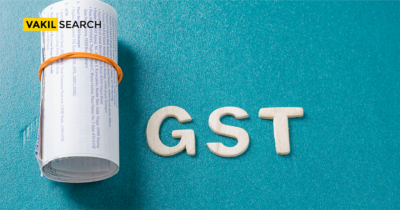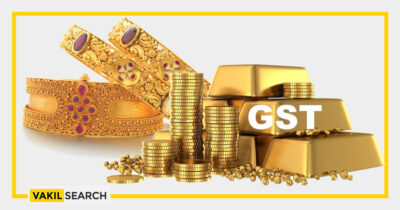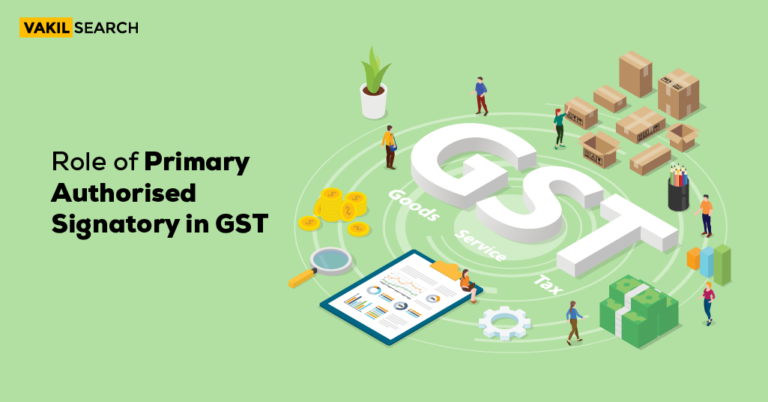If you are looking forward to knowing about how GST on gold gets calculated on Jewellery, then keep reading here!
Overview
The Goods and Services Tax (GST) significantly impacted the gold market. For the most part, the price of gold is not subject to the same GST rate at all levels, from purchasing to manufacturing. Consequently, the supply of the precious metal and its manufacture into gold ornaments are subject to GST. Those looking to buy gold should learn all they can about the GST on gold jewelry 2024 and its implications.
What is GST on Gold?
GST or Goods and Services Tax is a tax levied on the supply of goods and services in India. The gold GST rate vary depending on the type of gold and the services associated with it.
| Particulars | HSN Code | GST Rate |
| (1) Precious stones (other than diamonds) and semi-precious stones, whether or not worked or graded but not strung, mounted or set (2) Ungraded precious stones (other than diamonds) and semi-precious stones, temporarily strung for convenience of transport (includes synthetic or reconstructed stones, apart from unworked or simply sawn or roughly shaped) |
7103, 7104 | 0.25% |
| Diamond, gold, pearls, silver, or articles of jewelry of silver or gold, and so on, including synthetic or reconstructed stones, unworked or simply sawn or roughly shaped | 7101, 7102, 7106, 7107, 7108, 7109, 7111, 7113, 7114, 7116, 7118 | 3% |
| Job work in relation to cut and polished diamonds, plain or studded jewellery of gold, silver and so on | 9988 | 1.5% |
Here is a Table of Gold GST Rate
| Type of Gold | GST Rate |
| Gold Bars, Coins, and Jewelry | 3% |
| Making charges for Jewelry | 5% |
| Goldsmith or Silversmith services | 5% |
| Gold Import | 10.75% (including customs duty of 7.5% and 3% GST) |
Impact of GST on Gold
The introduction of GST on gold Jewellery 2024 in India has significantly impacted the gold industry. Here are some of the immediate effects of GST on Gold:
- Increase in Price: After implementing the gold GST rate, the precious metal has become expensive. The increase in tax rates from 1.2% to 3% has lowered the demand for gold in general. The rising price of gold has reduced its demand and influenced the liquidity of investing in this precious metal.
- GST on Gold Jewellery: The GST on gold jewellery in 2022 translates to 5% levied on making charges. Typically, GST on gold jewellery is either in the form of a fixed charge or as a fixed percentage of gold value. This is why the making charges often vary among jewellers and influence the GST on gold coins and ornaments.
- Improved Transparency: The Goods and Service Tax system requires gold dealers to record every transaction. This is expected to improve accountability and transparency among both sector segments. Notably, only 30% of this sector can be categorised as organised. As a result, it is feared that a high rate may coax vendors to smuggle gold or sell the precious metal without a proper bill.
- Other Factors: Besides GST on gold jewellery 2024, other factors like high liquidity, exchange rates, reduced gold mining, and a hike in international rates increase gold prices.
- Free Trade Agreement: Advantages like the Free Trade Agreement with countries like South Korea have enabled GST-registered importers to ship gold without paying an additional 10% customs duty.
Note: The values used in this table are just an example, and the actual values may vary based on the current GST rate and the making charges of the jewellery. It is always advisable to check the Goods and Service Tax rate with the jeweller and get a proper bill for the purchase.
| Parameter | Example |
| Weight of Gold | 10 grams |
| Price of Gold | ₹ 4,500 per gram |
| Cost of Gold | 10 grams x ₹ 4,500 per gram = ₹ 45,000 |
| Making Charges | ₹ 500 per gram |
| Cost of Making Charges | 10 grams x ₹ 500 per gram = ₹ 5,000 |
| Total Cost of Jewellery | ₹ 50,000 |
| GST Rate on Gold Jewellery | 5% |
| GST on Making Charges | 5% of ₹ 5,000 = ₹ 250 |
| Total GST Payable | ₹ 250 |
| Total Cost of Jewellery after GST | ₹ 50,250 |
Impact of GST on Gold: Comparison of Gold Price Before and after GST
The cost of gold extraction, gold processing, and profit margin are all included in the price of gold bars, bullion, and pure gold. The tax has an impact on all of them. Gold imports have not been affected by a rise in demand for precious metals. Before and following the implementation of the GST regime, the import duty remained unchanged at 10%. The GST has not led to increased smuggling, as some have speculated. Profit margin is an opinion, so it is omitted from this discussion. For gold jewelry, additional charges apply.
|
Particulars |
Pre-GST |
Post-GST |
| VAT | 1% | 1% |
| Sales Tax | 1% | Nil |
| Gold making charges | Nil | 5% |
| Import duty | 10% | 10% |
| GST Rate (Gold value) | Nil | 3% |
There is currently three percent GST on gold and gold-related jewellery, five percent on the cost of making gold jewellery, and 7.5 percent on import duty. Thus, the customer’s total Goods and Service Tax and duty implication on pure gold is 10.5% of the total price.
GST Rates on Gold Purchase and GST on Gold Making
According to Section 8 of the CGST Act, the sale of gold ornaments or jewelry to ordinary individuals constitutes a composite supply of goods and services. In this context, the gold itself is categorized as goods, while the making charges or value addition pertain to job work. Since the primary supply is the sale of gold, the GST rate of 3% is applicable on the total value of the jewelry, regardless of whether the making charges are itemized separately. The Central Board of Indirect Taxes and Customs (CBIC) has provided clarification on this matter in its sector-specific Frequently Asked Questions (FAQs) regarding GST on gold, including the applicable gold GST rate for gold.
The GST registration threshold limits that are generally applicable to regular taxpayers also extend to businesses involved in gold mining and distribution. Additionally, businesses engaged in the sale of gold have access to the composition scheme as per Section 10 of the CGST Act.
Many gold merchants, sellers, or jewelers engage the services of goldsmiths and specialists to perform job work on the gold bars or gold biscuits supplied to create jewelry. Such services are considered a supply of service. The goldsmiths charge a fee, known as making charges, for their services, which are subject to a GST rate of 5%. If these goldsmiths or specialists are not registered under GST, the gold merchant or jeweler is required to pay GST at a rate of 5% on a reverse charge basis.
Consumers who directly approach registered goldsmiths are also liable to pay 5% GST if the goldsmith is registered under GST.
GST on Gold – GST is not applicable when unregistered individuals sell gold jewelry or exchange gold ornaments for new ones at jewelry shops. Such transactions are not considered part of a business operation and fall outside the scope of supply under GST. However, if dealers or gold companies, such as Attica Gold company, Aashraya Gold Company, or Manappuram Gold Loan, purchase and sell second-hand gold jewelry, GST is imposed on the value of the gold, calculated following Rule 32(5) of the CGST Rules, subject to meeting certain conditions.
GST Calculation on Gold
While calculating GST on Gold Jewelry, including gold ornaments, coins, biscuits, and bars, the price includes the cost of extracting and processing the gold, as well as the profit margin, but excludes making charges. However, the price of gold jewelry also includes making charges. Before June 30, 2017, taxes such as VAT and service tax were applied to the price of gold jewelry, which were subsequently replaced by GST.
| Particulars | Before GST (₹) | Under GST (Not as a composite supply) (₹) | Under GST (As a composite supply) (₹) |
| Base price of 10 gm gold (Assumed) | 1,00,000 | 1,00,000 | 1,00,000 |
| Add: Basic customs duty (10%) | 10,000 | 10,000* | 10,000* |
| Assessable value for service tax | 1,10,000 | 1,10,000 | 1,10,000 |
| Add: Service tax (1%) | 1,100 | Nil | Nil |
| Assessable value for VAT | 1,11,000 | 1,10,000 | 1,10,000 |
| Add: VAT (1%**) | 1,111 | Nil | Nil |
| Assessable value for GST | 1,12,111 | 1,10,000 | 1,10,000 |
| Add: GST on gold at 3% | Nil | 3,300 | — |
| Total value of gold | 1,12,111 | 1,13,300 | 1,10,000 |
| Add: Making charges at 10%^ | 5,500 | 5,500 | 5,500 |
| Assessable value for GST | 1,17,611 | 1,18,800 | 1,15,500 |
| Add: GST on making charges at 5% | Nil | 275 | — |
| Add: GST on gold jewelry at 3%^^ | — | — | 3,465 |
| Total value of gold jewelry | 1,17,611 | 1,19,075 | 1,18,965 |
Taxes On Gold Ornaments Under GST Have Been revised. What Are The New Rates?
Previously, gold was sold at a 2% premium to the consumer, with 1% of that going to service tax and 1% to VAT (Value Added Tax). Customers will have to pay an additional 3% on the gold price and 5% on the manufacturing costs of an ornament after Tax is implemented.
These rates are higher than before the Tax, but they were lowered in response to public pressure after the government had announced 18 percent. After implementing the GST on Gold Jewellery 2024 prices have skyrocketed because the vast majority of gold is imported to India.
GST Calculation on Gold
| Particulars | Before GST (₹) |
Under GST (Not as a composite supply) (₹) |
Under GST (As a composite supply) (₹) |
| The base price of 10 gm gold (Assumed) | 1,00,000 | 1,00,000 | 1,00,000 |
| Add: Basic customs duty (10%) | 10,000 | 10,000* | 10,000* |
| Assessable value for service tax | 1,10,000 | 1,10,000 | 1,10,000 |
| Add: Service tax (1%) | 1,100 | Nil | Nil |
| Assessable value for VAT | 1,11,000 | 1,10,000 | 1,10,000 |
| Add: VAT ( 1%**) | 1,111 | Nil | Nil |
| Assessable value for GST | 1,12,111 | 1,10,000 | 1,10,000 |
| Add: GST on gold at 3% | Nil | 3,300 | — |
| Total value of gold | 1,12,111 | 1,13,300 | 1,10,000 |
| Add: Making charges at 10%^ (On base price+customs duty) | 5,500 | 5,500 | 5,500 |
| Assessable value for GST | 1,17,611 | 1,18,800 | 1,15,500 |
| Add: GST on making charges at 5% | Nil | 275 | — |
| Add: GST on gold Jewellery at 3%^^ (For composite supply) | — | — | 3,465 |
| Total value of Gold Jewellery | 1,17,611 | 1,19,075 | 1,18,965 |
*The customs duty rate was increased to 12.5% from the previous 10% under the Finance Act 2019.
**Assumed to be 1%, may vary based on the state/UT.
^Making charges vary for each jeweler. We assume it to be 10% in this case.
^^If the supply of gold jewelry is considered a composite supply, the applicable gold GST rate, including making charges, is 3%. The supply of gold is considered the principal supply.
GST on Gold Exemptions
An exemption from GST was declared during the 31st GST Council meeting held on 22nd December 2018. As a result, no GST is levied on the supply of gold by the designated agency to gold jewelry exporters who are registered under GST.
This decision has reduced the GST burden on Indian exporters of Gold Jewellery and likely enhanced the competitiveness of Indian gold exports in the global market. However, this exemption does not affect domestic purchasers of gold jewelry.
E-Way Bill Rules for Gold and its Forms
Before September 13th, 2022, according to CGST Rule 138(14), the transportation of gold in any form, including jewelry, goldsmith’s wares, and articles (Chapter 71), did not necessitate the use of an e-way bill. Consequently, whether the supplier or recipient of gold was registered under GST or not, they could transport gold without the requirement of an e-way bill.
However, starting from September 13th, 2022, based on state notifications, the National Informatics Centre (NIC) has introduced a separate window for generating e-way bills specifically for the transportation of gold, gold jewelry, or precious stones.
Availability of Input Tax Credits for GST on Gold Business
The jeweler or gold merchant can seek reimbursement for the Input Tax Credit (ITC) paid on the raw materials utilized, namely gold, and other expenses related to job work. Even in cases where the gold merchant pays taxes on a reverse charge basis for supplies from an unregistered job worker, they can still claim the ITC for such taxes.
Exclusivity From the GST
Goods and Service Tax exempted gold supplies to licensed jewellery exporters were declared at the 31st GST council meeting. This exemption aims to help India’s gold export sector compete in the global market by lowering the Goods and Service Tax burden on gold jewellery exporters. On the other hand, licensed jewelers can claim a 2% Input Tax Credit on the costs of making jewelry. As a result, the exemption will not benefit domestic consumers but rather gold jewellery exporters.
Suppliers are turning to unorganized gold markets and illegally importing raw gold due to Tax implementation, despite expectations that it would lead to greater transparency and accountability in this sector.
E-Way Bill Rules for Gold and Its Forms
CGST Rule 138(14) states that an electronic waybill was not required for the transportation of gold in any form, including jewelry, goldsmith’s wares, and articles (Chapter 71), prior to September 13, 2022. Therefore, gold can be transported without the need for an electronic waybill regardless of whether the recipient or supplier of the gold is registered under GST.
A separate window for creating electronic waybills for transporting gold, gold jewelry, or precious stones has been made available by the NIC beginning on September 13, 2022, by notifications from the relevant states.
Considerations Before Investing in Gold
- As gold prices frequently fluctuate due to factors such as demand, supply, and currency fluctuations, the final transaction amount impacts GST on Gold Jewellery 2024.
- The purchase bill should include both precious and semi-precious stones separately because they are subject to different Tax rules.
- To ensure the purity of your gold jewellery, always purchase it with a hallmark.
- Depending on the quality of the gold, it can cost significantly more or less. As a result, the Tax rate varies with gold quality. The best quality of gold, 24 karats, is used by most jewellers to make gold jewellery. However, 22 karats, 18, and 14 karats of gold are also commonly used.
Popular Advance Rulings on GST on Gold Under GST
Karnataka AAR ruling in the case of M/s Attica Gold Pvt. Limited, order KAR/ADRG/15/2020 dated 23rd March 2020
- Matter/Issue: The gold company in question provides instant cash for gold and releases pledged gold at the prevailing market price, registered under GST. In the case of purchasing second-hand gold from unregistered individuals, if there is no change in the type or quality of the goods, the following issues were addressed:
- Valuation: Is GST charged only on the difference between the selling price and the purchase price, as outlined in Rule 32(5) of the CGST Rules?
- ITC Claim: Can the company claim Input Tax Credit (ITC) for purchases made from dealers where the marginal scheme is applicable?
- Valuation: Yes, if the company issues an invoice specifying the goods as second-hand or deals with them without altering their form or type, the valuation of the gold purchased from unregistered individuals will be based on Rule 32(5) of the CGST Rules. The GST valuation will be the positive difference between the selling price and the purchase price. However, if the purchase price exceeds the selling price, no GST will be levied. Additionally, non-availment of input tax credit will be an additional condition.
- ITC Claim: If the purchase of second-hand gold jewelry is from a registered person, ITC can be claimed. In such cases, the margin scheme discussed above will not apply to the gold company for further sales.
Maharashtra AAR ruling in the case of M/s Biostadt India Limited, order GST-ARA- 72/2018-19/B- 165 Mumbai dated 20th December 2018
- Matter/Issue: The applicant company is engaged in the business of crop protection chemicals and hybrid seeds. It introduced a sales incentive campaign called the “Kharif Gold Scheme 2018.” Simply put, the scheme offers 10 gm and 8 gm gold coins to customers for purchases above a certain quantity and for making minimum payments, respectively. The following issue was addressed:
Things to Consider Before Buying Gold Ornaments
- Opt for hallmarked or BIS-certified gold jewellery to ensure its purity and authenticity.
- The price of gold is determined by its finesse. Lower-quality gold is typically available at a lower per-gram price, but it also carries a lower value.
- While 24 Karat gold is of the highest quality, it is not suitable for making jewellery. Generally, jewellery is crafted using 22 Karat, 18 Karat, or 14 Karat gold.
- It’s important to note that precious and semi-precious stones included in ornaments are taxed differently under the GST regime. Therefore, they should be listed separately on the purchase bill.
- The price of gold fluctuates daily and is influenced by various factors, including supply and demand, import duty, currency fluctuations, and market conditions in the Indian jewellery industry. These factors have a significant impact on gold transactions in India.
Conclusion
One such commodity, gold, is subject to various taxation regimes throughout its entire production cycle. To make a wise purchase, you need to be fully informed. To compute GST on gold jewellery, you need the advice of experts such as Vakilsearch Indeed.










